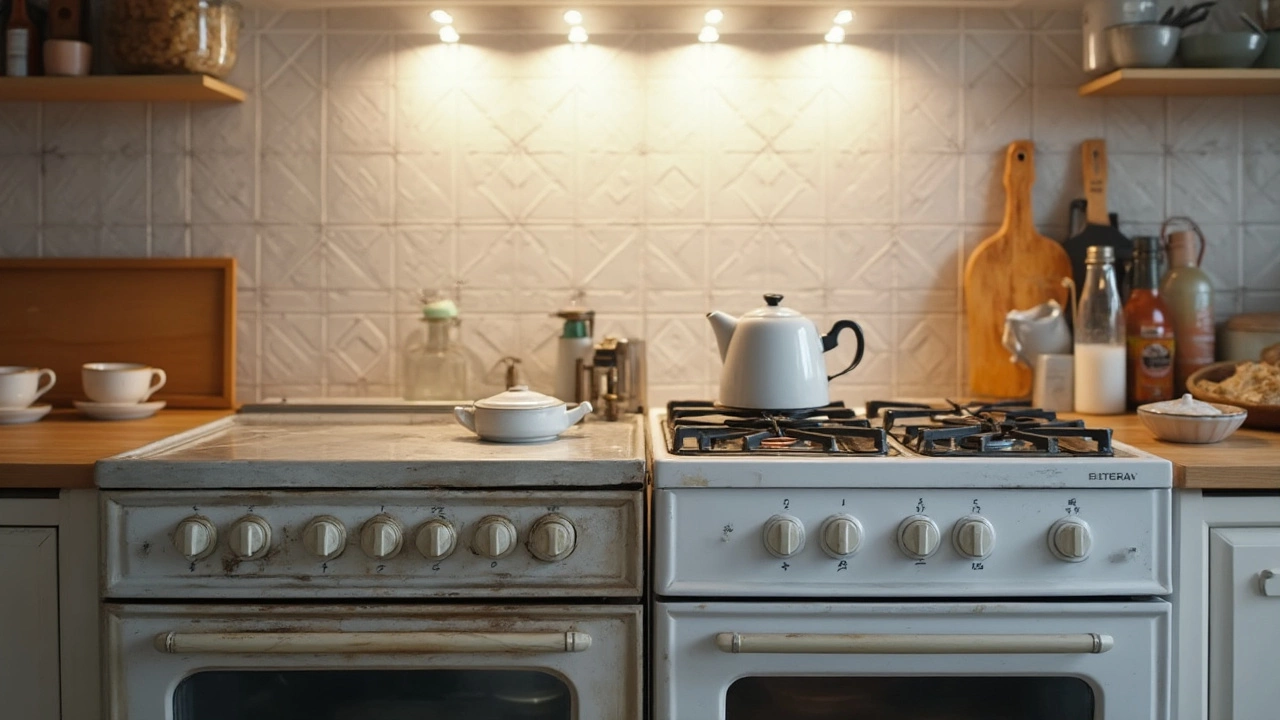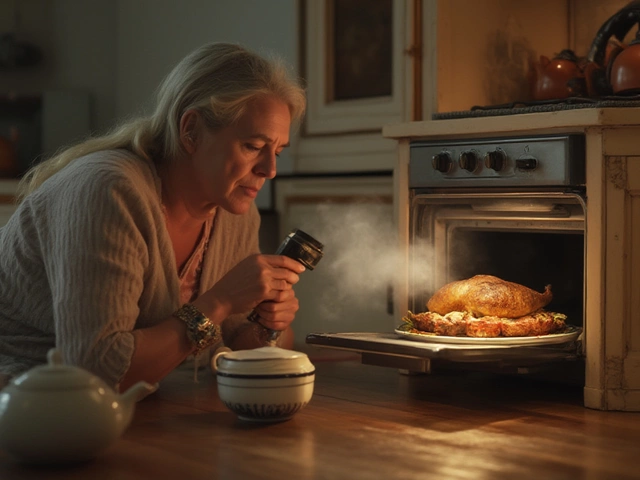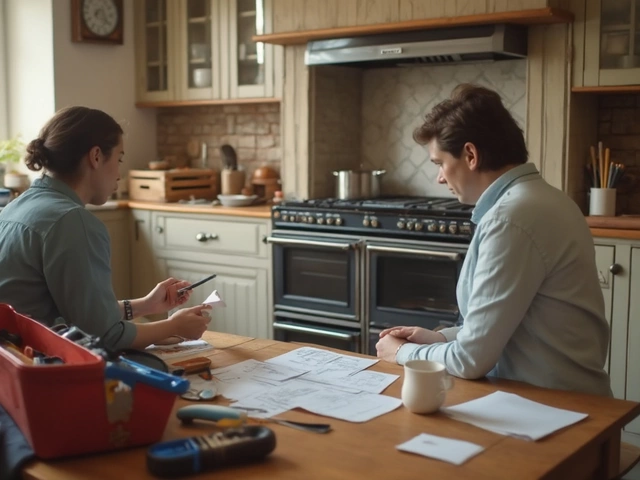When you shell out for an electric stove, you expect it to hang around for years—not just make it through a couple birthday cakes. Most folks don’t actually know how long these things are supposed to last. Some manufacturers will toss out numbers like 13 to 15 years, but what really happens in regular homes? Spoiler: It depends a lot on how you treat it and a little bit on luck.
What nobody tells you is that simple habits—like keeping the burners clean and not slamming oven doors—can mean the difference between buying a new stove in eight years or calling it trusty after fifteen. And those “weird little problems” that pop up? Sometimes, you can fix them with a screwdriver and fifteen minutes of your time instead of calling a repair service. Don’t worry, you don’t need an engineering degree.
But let’s be real: just because your stove is old doesn’t mean it’s done for. There’s a gray area where repair makes sense—if you know what to look for. I’ll break down what a normal lifespan actually looks like, warning signs your stove might be headed for the scrap heap, and some simple things you can start doing today to squeeze a few more years out of your kitchen workhorse.
- Average Lifespan: What the Numbers Say
- Top Reasons Stoves Fail Early
- Simple Habits to Extend Your Stove’s Life
- Repair or Replace? When to Draw the Line
Average Lifespan: What the Numbers Say
You probably see a lot of different answers online about how long an electric stove lasts. Here’s the straight truth: the national average in the U.S. is 13 years, according to the Association of Home Appliance Manufacturers. Some people push them to 15 or even 20 years, but not without repairs along the way. If you talk to appliance repair pros, they’ll usually say you should expect that 10–13 year range if you use it like a regular person.
Different home insurance companies and consumer magazines did surveys showing the same thing—a well-treated electric stove is good for about 13-15 years. The table below puts a few data sources side-by-side so you can see the numbers yourself:
| Source | Expected Lifespan (years) |
|---|---|
| Association of Home Appliance Manufacturers | 13 |
| Consumer Reports | 13-15 |
| HomeServe USA (Home warranties) | 13-15 |
There are a few things that usually decide if your oven taps out early or keeps going. People who cook more than average, use the oven daily, or rarely clean the burners and drip pans might be shopping for a new one sooner rather than later.
One thing many folks don’t realize: while most electric ovens keep heating up just fine near the end of their life, it’s usually little stuff—burners that won’t turn on, dials that snap, or a cheap electronic board that goes out—that finally puts them in the scrap heap. These aren’t always “big” repairs, but when parts start failing one by one, you end up weighing the repair costs against just buying a new appliance.
If you’re hoping for the high end of that 15-year range, it pays to give your oven a little extra attention. Even just simple routine cleaning and not running the self-clean feature too often can stretch that lifespan. More on how to do that in a bit.
Top Reasons Stoves Fail Early
If you’re pouring money into electric stove lifespan but getting less than a decade out of your appliance, something’s up. Most early failures don’t come from bad luck—they’re usually down to bad habits or stuff that’s easily prevented. Let’s talk about what really tanks these things before their time.
- Neglecting Cleaning: Gunk builds up fast on burners and under knobs. Burnt-on spills insulate heating elements, forcing them to work harder, and that knocks months or years off your appliance durability.
- Overheating: Leaving burners on max heat for long stretches, especially when cooking with empty pans, is rough on components. The heating elements and wiring take the hit. I’ve seen stoves go bad at year six from this alone—especially when someone gets into canning or big-batch cooking.
- Ignoring Minor Issues: That one burner that flickers or that oven door that barely seals? Little things can turn into expensive breakdowns. Loose wires or failing thermostats can actually short out your control board if left alone too long.
- Bad Installations: If the stove wobbles, is jammed into a too-tight spot, or doesn’t have proper ventilation, you’re asking for trouble. Wiring that isn’t tight or grounded right keeps popping fuses or even melts connectors.
- Power Surges: Cheap surge protectors or none at all? One lightning strike or big surge can fry the main board or digital controls in seconds. Oven repair pros can usually spot this by the scorch marks inside the back panel.
You can even see the numbers. Stove maintenance makes a huge difference. According to a survey by the National Association of Home Builders, regular maintenance adds about 4 years to the average stove’s life:
| Stove Type | With Proper Maintenance | Without Maintenance |
|---|---|---|
| Electric Range | 13-15 years | 8-10 years |
So, it’s not always the manufacturer’s fault if your range gives up early. Pay attention to how you use and care for it. Most stoves won’t just die on their own—something usually pushes them over the edge.

Simple Habits to Extend Your Stove’s Life
If you want your electric stove lifespan to hit those double digits, the secret isn’t anything fancy. It’s mostly about being consistent with a few habits that anyone can pull off. Regular care will save money—not just in energy bills but by dodging costly repairs for longer. Here’s what pays off:
- Wipe spills right away. Don’t let sauces and crumbs sit. Sticky, burnt-on goop isn’t just ugly—over time, it can gum up burners and even damage electronics underneath the surface.
- Keep those burners and drip pans clean. About once a week (or whenever they’re looking rough), give them a good wash. If food bakes onto them, they lose efficiency and you’re more likely to have uneven cooking—or problems getting them to heat up at all.
- Check the oven seal. That rubbery gasket around the oven door? If it’s cracked or loose, your oven will work extra hard to stay hot, which wears it out. Run your hand near the door while it’s on—if you feel heat, check that seal.
- Don’t use the stovetop as a shelf. Those heavy pots, grocery bags, or even cookbooks can stress the burners and scratch up surfaces. Keep it clear when you’re not cooking.
- Avoid slamming the oven door. Sounds silly, but that “bang” slowly messes with hinges and the glass window. Shut it gently—trust me, it adds years.
Here’s something wild: according to a 2023 appliance survey, stoves cleaned every week had a 40% lower chance of breakdown before year ten, compared to those cleaned just once a month.
| Cleaning Frequency | % Needing Major Repair Before 10 Years |
|---|---|
| Weekly | 15% |
| Monthly | 25% |
| Rarely/Never | 38% |
It’s also smart to use the right cookware. Flat-bottomed pans that match the size of the burner make sure heat is used well—no wasted energy and less strain on the elements. Oh, and if something feels off (like a weird smell or a wonky burner), don’t just ignore it. A small, cheap fix now beats a total breakdown later.
Repair or Replace? When to Draw the Line
So, your electric stove is on the fritz. Maybe one of the burners won't heat up, or the oven light is out for the third time this year. Here’s what you really want to know: when is it smarter to fix it, and when should you just bite the bullet and shop for a new one?
First, let’s talk numbers. On average, a good electric stove lifespan runs about 13 years, give or take a couple. If yours is still under ten, and repairs are minor (think under $200), a repair usually makes sense. Fixing things like heating elements, burner switches, or surface indicators are often quick jobs and won’t break the bank.
But as appliances get older, parts can become pricey or hard to find. You also want to be honest with yourself about how many things are going wrong. Are you calling a repair tech every few months? Is something new breaking each time?
"The 50% rule is your friend: if repair costs are more than half the price of a new stove, skip the fix and start shopping," says Consumer Reports.
If you’re facing a costly repair (like replacing the electronic control board, which can run $300–$500), and your stove is already past that 10-year mark, replacing starts to look like the better deal. Here’s how the math often shakes out for oven repair costs:
| Common Problem | Average Repair Cost (USD) |
|---|---|
| Burner replacement | $80–$150 |
| Oven thermostat | $100–$250 |
| Electronic control panel | $300–$500 |
| Element fuse | $50–$125 |
If you’re handy and the job is minor (like replacing a burner coil), you might just save a bundle doing it yourself. But if you see any of these red flags, think hard before another repair:
- Your stove is more than 13-15 years old.
- Safety features (like auto shut-off) aren’t working.
- You’re calling for repairs more than once a year.
- The cost to fix is more than 50% of the price of a new model (which usually runs $700–$1500 for a mid-range stove).
Also, don’t forget energy efficiency—the newer appliance durability standards mean modern stoves use less power and come with smarter features. If your power bill is creeping up and your machine is decades old, it’s probably time for an upgrade.
One last practical tip: always get a quote in writing from a trustworthy repair tech before saying “yes” to a pricey fix. Sometimes you’ll be shocked (in a bad way) by the real price tag. Every dollar counts, and in my house, Lorelai doesn't let me forget it.




